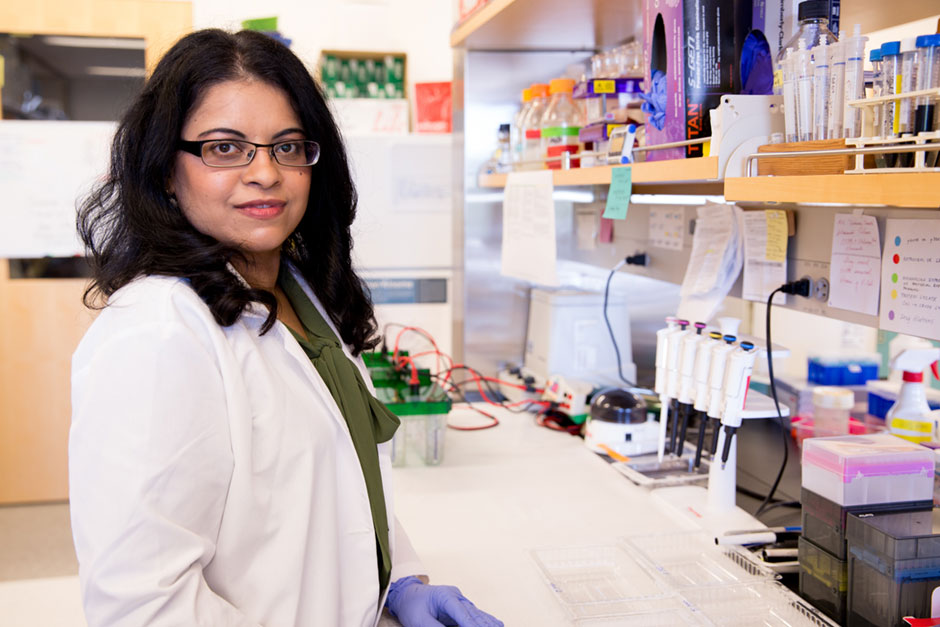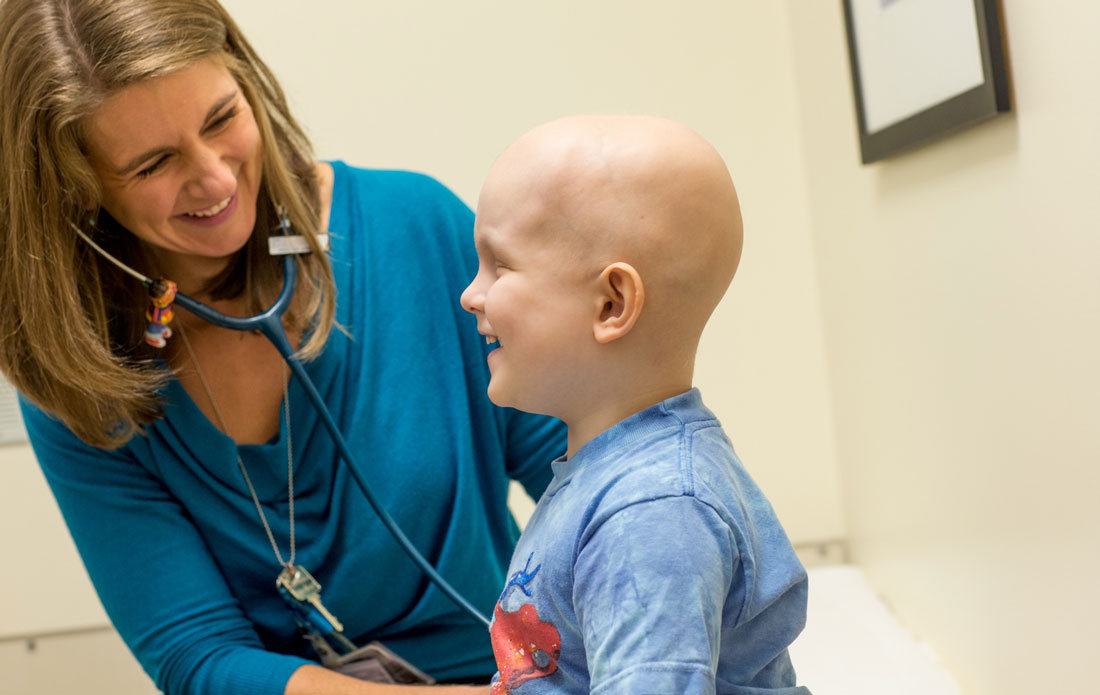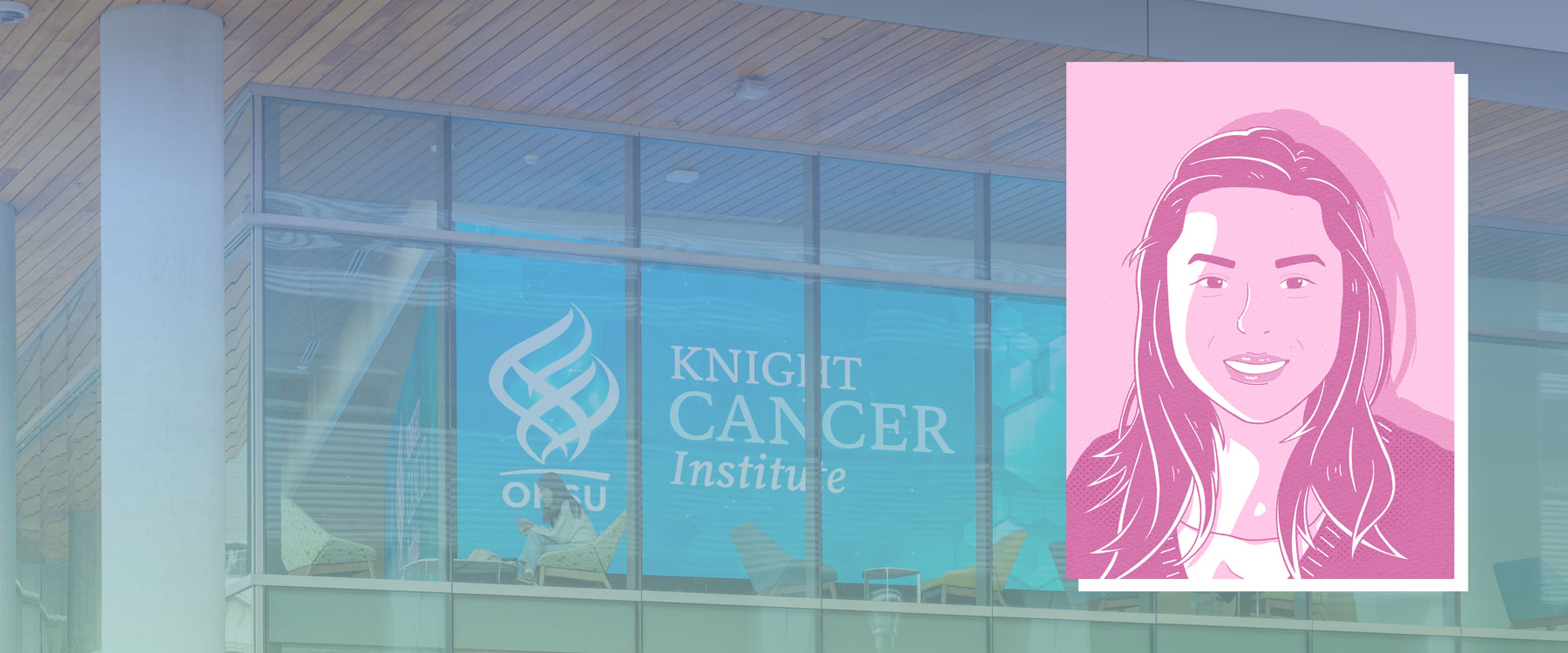Every year, more than 4,500 children in the U.S. are diagnosed with brain and spine tumors — known as central nervous system (CNS) tumors. OHSU Doernbecher Children’s Hospital treats approximately 60 young patients with CNS tumors each year.
Some kids have safe surgical removal of a benign tumor and don’t require further interventions. Others with aggressive, malignant brain or spine cancers are treated with a combination of surgery, radiation therapy and chemotherapy. But radiation and chemotherapy take a serious toll on kids and their developing brains. There is a desperate need for more targeted therapies for kids with CNS tumors and cancers.
Physicians and researchers at OHSU Doernbecher’s Pediatric Brain Tumor Program want to leverage the research being done for adult cancers and use it to bring novel therapies to clinical trials for kids. With donor support, the program can invest in tumor sequencing and molecular diagnostics to understand each tumor at a molecular level. That will require an investment in people – recruiting more researchers to discover innovative treatments and building the clinical research infrastructure to bring new therapies to patients through clinical trials.
Kellie Nazemi, MD, is the medical director of the Pediatric Brain Tumor Program. Monika Davare, PhD, is the program’s assistant director of research and an assistant professor of pediatrics in the division of Hematology and Oncology whose work is focused on overcoming the therapeutic bottleneck in rare but aggressive pediatric and adult cancers. Drs. Nazemi and Davare spoke about their work and their goal of delivering the most novel and relevant targeted therapy to each child.
Dr. Nazemi, how common are pediatric brain tumors compared to other cancers?
Interestingly, you hear a lot about leukemia being the most common cancer. That is true if you use the word “cancer” very specifically. Because we deal with both benign and malignant tumors, it turns out that the incidence of pediatric brain tumors is higher than leukemia. Many benign tumors cannot safely be removed from the brain or spinal cord and these often require ongoing treatment throughout the child’s life.
How does that compare to adult cancers?
In adults, the incidence of brain tumors is much lower than that of breast, prostate, lung and colon cancer. The bulk of the research dollars are going into those adult cancers. And although pediatric brain tumors have the highest incidence rate in children, their rate of 5.5 per 100,000 in children is small compared to the cancer rates in adults (200 per 100,000 for breast cancer or 170 per 100,000 for prostate cancer). So it is a difficult investment for drug companies to make, especially when there are many different sub-categories of tumor types.
What are the outcomes for kids versus adults?
Although the rate of cancer incidence is much higher in adults, the malignancy rate for brain tumors is much higher in kids and adolescents than in adults. Brain tumors are the highest cause of cancer death in children.
Too many kids are dying of brain tumors. And this is not the only problem.
“A family losing their child is a terrible outcome, but sometimes surviving from a brain tumor is an overwhelming challenge because of the impact of radiation and chemotherapy.”
How does Doernbecher’s Pediatric Brain Tumor Program work to tackle those challenges?
We are always mindful of the journey that the patient and family are on, guiding them with our expertise. Every decision we’re making, we have to think about the risk versus the benefit. Every case is unique, even if it’s the same type of tumor. We approach each patient’s case as a team of experts who are unified around providing the best for that patient. There are treatments that we can do that might feel aggressive and make you feel like you’re doing something, but sometimes it’s the wrong thing to do because the treatment is more likely to hurt them than help them.
How has Doernbecher’s intra-operative MRI changed outcomes for kids?
The iMRI allows our brain surgeons to remove a tumor completely the first time. The fact that Doernbecher is able to offer this type of surgical intervention is gold! It’s so important because we’ve given them a chance to be one of the kids who walks out of the operating room unharmed and unaffected by their brain tumor journey. So many more kids are able to have surgery and move on with a normal childhood because of the iMRI.
How do you help patients and families navigate their treatment?
We put the kids at the center, surrounded by specialists from our trans-departmental and multi-disciplinary team. Our focus is making families’ experience as smooth and seamless as possible, making sure everyone on the team is aware of the steps in each child’s treatment plan. Our Pediatric Brain Tumor Board meets every week to discuss each patient’s treatment plan.
The treatment teams are neurosurgery, oncology and radiation medicine. Treatment decisions depend heavily on collaboration with neuroradiology and neuropathology. Additional pediatric specialists critical in caring for these kids include neurology, endocrinology, audiology, ophthalmology, genetics, intensive care and emergency medicine. The team that supports brain tumor patients also includes social workers, specialized nurses, school teachers, neuropsychologists, and clinical research assistants — basically every part of Doernbecher is involved with these kids.
How does Doernbecher help get kids access to new treatments?
We work with our colleagues across the country to develop new therapies. Most children’s hospitals are part of the Children’s Oncology Group, but Doernbecher is also one of the inaugural members of the Pacific Pediatric Neuro-Oncology Consortium, which is specific to brain tumor trials in kids. PNOC was established in 2012 and now includes18 prominent institutions across the country. It has been a really important resource for us to help kids to receive novel experimental treatments close to home.
In the age of precision medicine, is it a challenge to offer new targeted therapies?
With our national collaborations, we are able to offer new targeted therapies and it is clearly an exciting era of development. We are also deeply connected to colleagues across the country, so it is easy to get families connected to clinical trials that are only available at certain sites when this is necessary. This molecular era is a new world that we’re constantly navigating, especially with families on social media and internet browsing about their child’s cancer treatments. As clinicians, we’re trying to keep up with our partners in the science world!

Dr. Davare, what’s your perspective from the research side?
We are in the post-genomic era, where clinicians and researchers have the tools to molecularly dissect the tumor to identify vulnerabilities in it that can be targeted with greater precision. This is the premise and the goal of personalized or precision oncology. In many adult cancers, we have accomplished or are coming closer to accomplishing this goal. However, in some pediatric cancers, particularly in childhood brain tumors, we are still at an early stage. The overarching goal is to identify novel treatments that are more selective and therefore do less collateral damage.
“This is particularly paramount in pediatric patients; children have vulnerable developing organ systems, and intense cytotoxic treatments take a particularly severe and long-term toll on kids as opposed to adult cancer patients.”
I would like to see de-escalation of the intensity of chemotherapy and radiation by incorporation of more targeted therapies, hopefully in my lifetime as a researcher. It’s going to take a process, though. My desire is to take some of the things that I’m working on in the lab and enable Kellie to take our leadership in the scientific side of things and go to the national consortia and lead trials.
I am uniquely positioned as a basic scientist and pediatric brain tumor researcher because I have one foot straddled on the adult side and one on the pediatric side, so I’m leveraging a lot my knowledge gained from working on adult cancer so as to bring it to the pediatric side with the ultimate goal of precision medicine. The idea would be to still use chemotherapy and radiation, but only in a limited context.
Actually, the process that our labs are using is very similar to what’s done on the adult side, but one of the major barriers for pediatric brain tumor research is that there is very limited funding from NIH, from foundations and from pharma. This is because childhood brain tumors are relatively rare, and the question by many funding bodies is “what is the frequency” or “how many patients will your work impact?”
Pediatric and rare diseases don’t get enough research support?
When you take an aggressive tumor that’s in 200 kids and you start molecularly slicing it to give them targeted therapy, you are no longer talking about large patient numbers like in adult cancers such as lung, breast or prostate cancer, so that is definitely a barrier for funding. However, on the lab side of things, we are optimists, so we don’t let that road-block us. Every patient matters as far as I am concerned.
How can we leverage the research that’s being done in adult cancers?
One of our goals is to identify the drivers in some of these tumors. Kellie has mentioned a patient who, for the first time after being on chemotherapy for 14 years, saw a reduction in tumor size because of a targeted therapy. That targeted agent was originally developed for treating a subtype of melanoma, a mostly adult cancer. So, if you start really characterizing each patient’s tumor at a molecular level, and find vulnerabilities where there are agents already being used in adult cancer, then we can leverage those for pediatric brain tumor therapeutics.
What do you need to take the program to the next level?
“We need to bring the tumor from the operating room to the lab, we need funding in order to have people in the lab to do the work; we need money for molecular diagnostics and drug screening.”
Having patient samples and genomic data will allow us to test new drugs that are selectively killing tumor cells rather than killing all cells like chemotherapy. With Kellie’s position with PNOC, we are really in a good position to translate our bench discoveries more so than before with the larger consortia.
From an innovation perspective, we also have an opportunity to potentially take some of our novel discoveries into development or licensing opportunities via OHSU Technology Transfer office. Nevertheless, the ultimate goal is to enable Kellie to take things to trial.
What’s your long-term vision for pediatric brain tumor research?
If we can bring tumor samples into the lab, I would dream of doing real-time analytics on them using brain tumor organoids and sequencing of the tumor genome via the Knight Diagnostic Laboratories. The combination of these datasets will enable me to give Kellie meaningful information (e.g., a molecular report on the tumor) that would then help her to make decisions that impact the outcome of the patient.
If you were to prioritize how philanthropy could impact your work, what would that look like?
“We often have generous donors who want to buy us a piece of equipment. The reality is, I need people in the laboratory.”
We are fortunate at OHSU to have state-of-the-art instrumentation and an academic culture that fosters sharing and collaboration. However, the rate-limiting step is to have intelligent people in the lab to push these projects forward. Therefore, I need help with salary support for a postdoctoral fellow or senior research associate in the lab who will be my partner to push this specific project forward.
There is enough talent in Portland, so recruiting is not a challenge. It’s just the funding. We need funding to bring people to the lab. This is paramount for our success: a strong, vigorous and talented team.
Dr. Nazemi, how can donors help support and advance the program and patients?
As our team members continue to dedicate themselves so completely to treating patients and advancing science, we need a program manager and a program coordinator to drive our strategic plan forward. We also need a research nurse and clinical research associate to increase clinical trial availability for our patients. These are the people who do all the work to get trials open and available at OHSU Doernbecher, then maintain each trial and submit data for each patient while monitoring for safe and appropriate movement through the treatment plan. We hope to develop the new role of research project manager as well, to create a fluid collaboration between basic scientists, the molecular pathology being discovered in each patient, clinical trial development as well as more specific management of our clinical trials portfolio.




